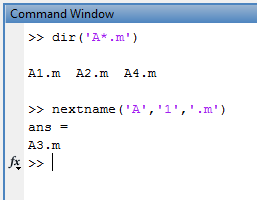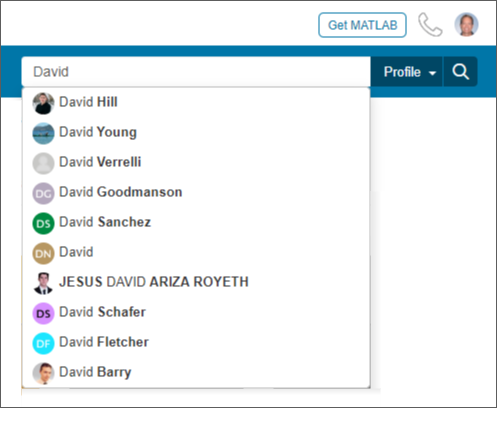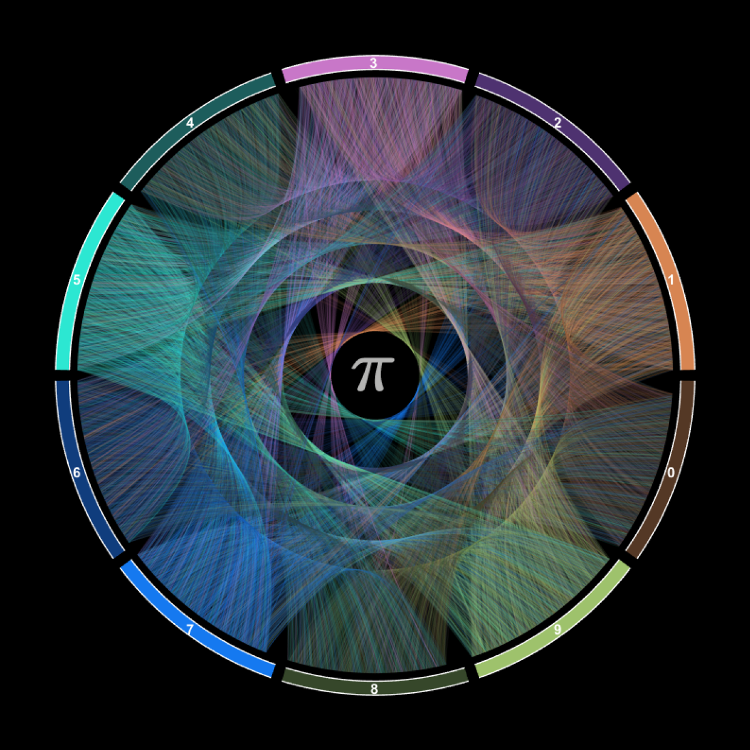Ergebnisse für
Hello,
I am trying to simulate a PMSM, which has a Quasi sinusoidal back-emf waveform. Is there any way I can define the back emf to be anything other than Sinusoidal/Trapezoidal?
Thanks in advance. Saurabh Kumar
Check out this pick of the week from Will. Steve's progressbar submission has been around since 2005 and still runs perfectly. Check out the blog post to see why Will picked it.

Recently, I have been learning the mathematical modeling of switching converters. Looking for a lot of data, I know that the current loop control mainly includes peak current, valley current and average current control methods. The detailed process of peak current modeling is found in the book "modeling, control and digital realization of switch converter". However, my brother has not found the detailed introduction of average current modeling. I would like to ask you brother and sister have any good information recommendation, the best is books (the most detailed explanation). Thank you very much!
I have issue with the design that i have downloaded from mathwork community. how to solve regarding this matter
Failed to load library 'powerlib_models' referenced by 'mcupqc/Subsystem/Voltage Measurement/model' Component:Simulink | Category:Model error Failed to load library 'powerlib_models' referenced by 'mcupqc/Three-Phase V-I Measurement/model' Component:Simulink | Category:Model error Failed to load library 'powerlib_models' referenced by 'mcupqc/Three-Phase V-I Measurement1/model' Component:Simulink | Category:Model error Failed to load library 'powerlib_models' referenced by 'mcupqc/Three-Phase V-I Measurement2/model' Component:Simulink | Category:Model error Failed to load library 'powerlib_models' referenced by 'mcupqc/Three-Phase V-I Measurement3/model' Component:Simulink | Category:Model error Failed to load library 'powerlib_models' referenced by 'mcupqc/Three-Phase V-I Measurement4/model' Component:Simulink | Category:Model error Failed to load library 'powerlib_models' referenced by 'mcupqc/Three-Phase V-I Measurement5/model' Component:Simulink | Category:Model error Failed to load library 'powerlib_models' referenced by 'mcupqc/Three-Phase V-I Measurement6/model' Component:Simulink | Category:Model error
We are excited to announce that Adam Danz has accepted our invitation and now is a member of the Community Advisory Board (CAB)!
Adam has been a rising star in Answers, obtaining 4500+ reputation points in the past year! Furthermore, he has contributed high-quality files to File Exchange, with an average rating of 4.8. Adam also demonstrates good communication skills and the ability to work with others. Those characteristics are what we expect to see from a CAB advisor. You can learn more about him and CAB on the CAB page .
On behalf of all the community team, we would like to extend our warmest welcome to Adam!

Check out Sean's blog posts ( Intro , Authoring ) on Spider Plots. He's using spider_plot by Moses to create beautiful plots like this.

Hello everyone, I am trying to implement 3 level space vector modulation for a multilevel inverter. Without mapping vector for region selection of three level space vector, I am getting reference angle started from sector-1 to sector-6 as shown in ''theta_ref'' file. But when I am implementing mapping references for region selection (please see in the attached file ''mapping_reference''), the reference angle is shifting 180 degree that means it is starting from sector-6 to sector-1 as in attached file ''theta_ref_with_region_identification''. Could anyone please let me know why this is happening and how to solve this problem?
Thanks in advance.
hi MPPT on the designed bosst circuit does not work correctly. Can i get any help?
This article describes a six-step workflow for estimating the frequency response of an open-loop boost converter.
Estimating the Frequency Response of a Power Electronics Model
The following is a list of updates and new features for MATLAB Central, including MATLAB Answers, File Exchange, Blogs, and Cody.
New Features
Community highlights channel released - See this post for more details.
Answers comment UI change - A minor improvement to the user interface when adding comments to questions and answers in MATLAB Answers. This change should make it easier to discern between commenting and adding a new answers to a question.

Answers rich text editor update - The rich text editor has been updated to the 19b version of the MATLAB Live Editor. This update will primarily help with syntax highlighting along with resolving a few other issues.
Answer pages translation option - Answers translations options added. A translation option for questions and answers content has been added for French, German, Italian, Spanish, and Chinese languages.

Hey everyone! I'm spotlighting Nikolaos Nikolaou today because of the sheer quantity of his Cody solutions over such a relatively short time span. Nikolaos has submitted 1,161 Cody solutions over the last 6 months of 2019, averaging 6.4 solutions per day. Achieving a Cody rank of 19 with a score of 18,820 and earning him a plethora of badges (including the Speed Demon badge of course). He's completed 24 problem groups and is well into most of the remaining 35.
Way to go Nikolaos!

I have 1942x1 cell msgs. Single msg format is 1x1 Float64MultiArray. Inside that there is Data 16x1 double. I need to extract data and store them as vector [1942x16]. I was able to read every data and transpose them into 1x16. Now I need to store that 1x16 by row and build final 1942x16 vector. Does anyone have an idea for that?
how to Design ALMS algorithm using simulink please help me, for learning adaptive lms algorithms using simulink..without using LMS block
Good morning everyone,
I recently approached Simscape environment to similute (simple) electrical circuits based on resistors (R), capacitances (C) and direct current generators (I). The experience has been quite satisfactory.
Now I have to couple the Simscape models to novel modifications of sampling-based sensitivity analysis techniques and/or non gradient-based optimization methods (genetic algorithms, particle swarm, particle filters, etc) for model calibration. In this regard, I am not keen on potentilities offered by other toolboxes implemented in Simulink environment, rather than I would like to: i) to update the values of resistors, capacitances and current generators from script ii) to run the simulation from script iii) to collect the output in matlab workspace.
I looked for a while in possible solutions but I understood that it is not an easy task, and that the most common approach is to open the resume mask and manually update the parameters.
I wonder if there is any approach to do what I previously described. I know that it is possible with Simulink model, but have no idea if I can do the same with Simscape model.
The attached image is an example of Simscape model that I want to embed in a sensitivity analysis/optimization loop.
Thank you in advance for your kind advices
Hi,
I am trying to design a Simulink model for transmission cable to characterize some features of an existing electrical system. I am using the Lumped Parameter L-section with few segments. I want to set initial conditions to each segment capacitors. Is there a way I can set those?
Thanks in Advance.
Check out nextname by Stephen Cobeldick, this weeks pick by Jiro. Read Jiro's blog post about why he picked Stephen's submission this week.

Please post any comments to Jiro's blog post here.
I'm please to announce this new MATLAB Central feature for posting community highlights. This new channel will:
- Allow MathWorks and the community leaders to easily post newsworthy items to the community
- Allow community visitors to respond to these posts with Likes and Replies
- Allow anyone to follow/subscribe the channel so they can be notified of new posts
What do we mean by newsworthy? In short, this means anything we think some or all of the community might like to know. Here are some examples of what we’re thinking about posting to this new channel.
- New or upcoming community features or events
- User highlights (e.g. examples of good behavior, interesting posts)
- Interesting content (e.g. File Exchange pick of the week submissions)
- Release notes and new features
- Polls (future)
New highlights will appear on the community home page at the time they are posted and all past highlights can be found by going to the community home page and clicking the Highlights link in the right column.
As always, let us know what you think by liking this post or commenting below.

The following is a list of updates and new features for MATLAB Central, including MATLAB Answers, File Exchange, Blogs, and Cody.
New Features
Profile search - A global community profile search has been added. The search field on community profile pages has been updated from a standard content search to a user profile search. This improvement makes it easier to find community members across all MATLAB Central. Previously one had to search the Answers contributors , File Exchange authors , and Cody players page when looking for a user profile.

Last seen - We have added a 'last seen' timestamp to community profiles which displays the date of a person's last visit to MATLAB Central. This can be a relevant bit of information and help determine how recent someone has been active in the community.
Answers pages design update - Answers Q&A pages have been updated to remove extra white space. This update includes smaller sized avatars, and position changes for the voting and content actions among other small changes. All these changes also help improve the mobile experience as well.
Original poster styles - Original poster styles have been introduced in Answers. When a question author participates in a Q&A thread their comments or answers will be styled with a blue background and left border so they're easily discernable from other contributors.

File Exchange data in monthly emails - File Exchange stats will be included in the monthly email we send to contributors who've participated in the community on any given month.
Trending content algorithm - The MATLAB Central home page trending content algorithm has been updated to look at content activity over a shorter period of time resulting in a more dynamic feed.

